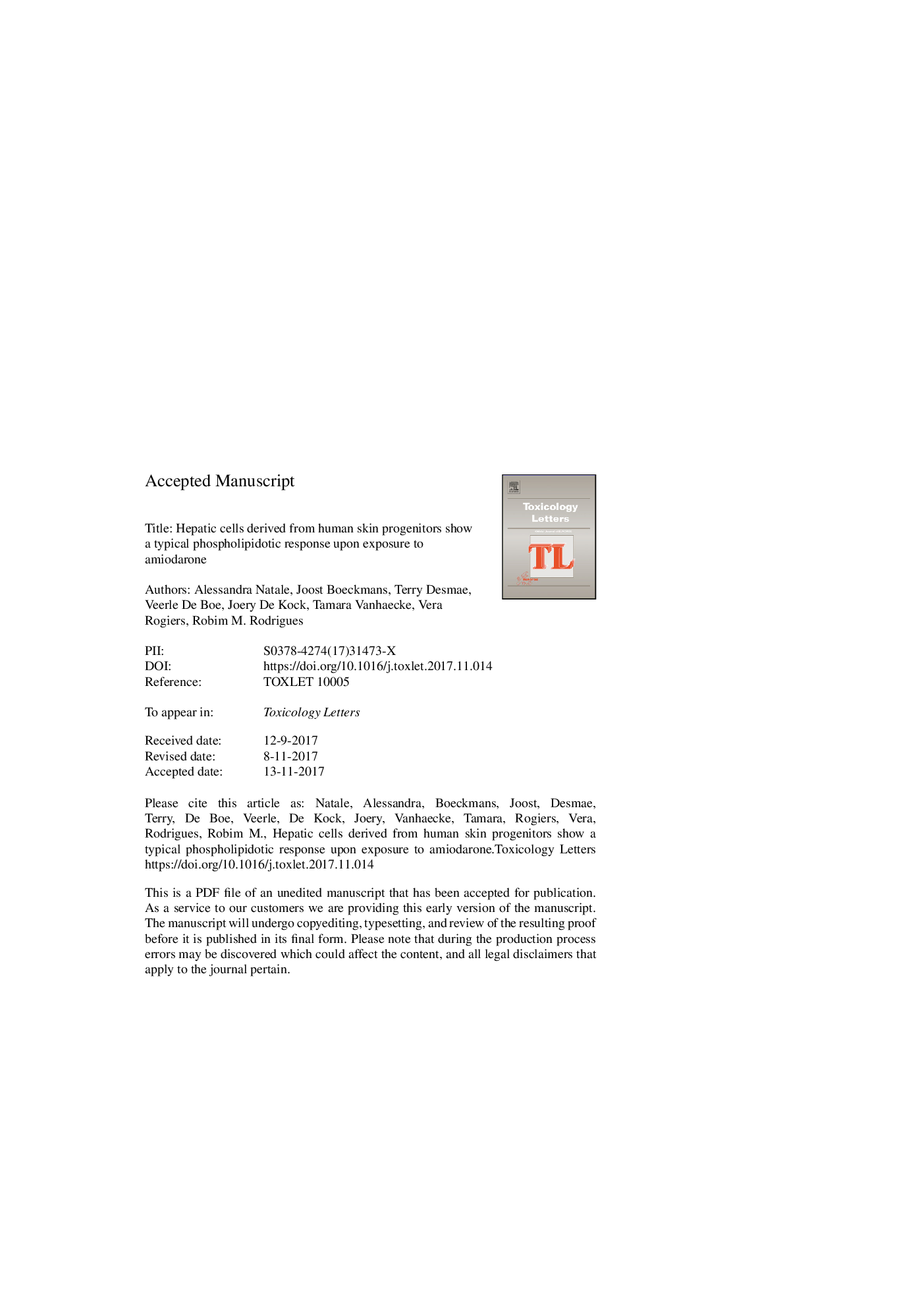| Article ID | Journal | Published Year | Pages | File Type |
|---|---|---|---|---|
| 8553504 | Toxicology Letters | 2018 | 29 Pages |
Abstract
Phospholipidosis is a metabolic disorder characterized by intracellular accumulation of phospholipids. It can be caused by short-term or chronic exposure to cationic amphiphilic drugs (CADs). These compounds bind to phospholipids, leading to inhibition of their degradation and consequently to their accumulation in lysosomes. Drug-induced phospholipidosis (DIPL) is frequently at the basis of discontinuation of drug development and post-market drug withdrawal. Therefore, reliable human-relevant in vitro models must be developed to speed up the identification of compounds that are potential inducers of phospholipidosis. Here, hepatic cells derived from human skin (hSKP-HPC) were evaluated as an in vitro model for DIPL. These cells were exposed over time to amiodarone, a CAD known to induce phospholipidosis in humans. Transmission electron microscopy revealed the formation of the typical lamellar inclusions in the cell cytoplasm. Increase of phospholipids was already detected after 24â¯h exposure to amiodarone, whereas a significant increase of neutral lipid vesicles could be observed after 72â¯h. At the transcriptional level, the modulation of genes involved in DIPL was detected. These results provide a valuable indication of the applicability of hSKP-HPC for the quick assessment of drug-induced phospholipidosis in vitro, early in the drug development process.
Keywords
Related Topics
Life Sciences
Environmental Science
Health, Toxicology and Mutagenesis
Authors
Alessandra Natale, Joost Boeckmans, Terry Desmae, Veerle De Boe, Joery De Kock, Tamara Vanhaecke, Vera Rogiers, Robim M. Rodrigues,
